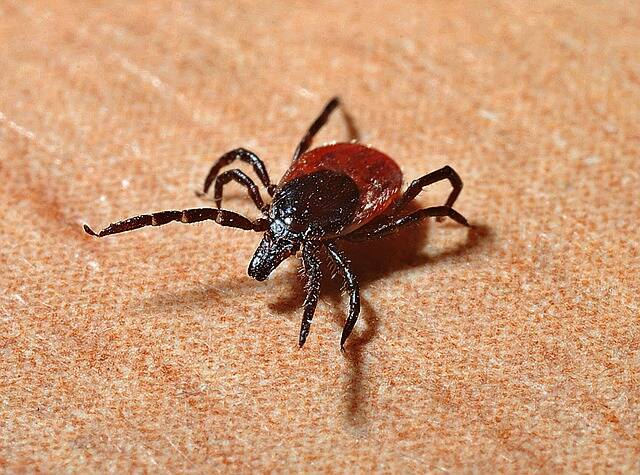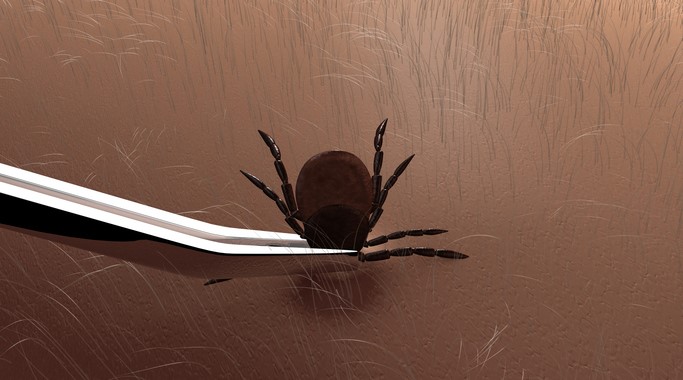- webnoviny.sk - article about picking ticks
- solen.sk - information about tick-borne encephalitis in pdf
- alphamedical.sk - about Lyme disease
- cdc.gov - Tick removal and testing
- kidshealth.org - Tick Removal: A Step-by-Step Guide
- webmd.com - How to Remove a Tick
How to remove a tick correctly and safely? 6 important steps

The tick, the bogeyman of warm weather, is here again. This small parasite can cause great health problems for humans. Therefore, if it is found on the body, it should be pulled out as soon as possible. It is not difficult, but it should be acted upon immediately.
Article content
Why is it necessary to remove it as soon as possible. Is it a health risk?
How to protect yourself from ticks and what is the prevention?
What if the tick is small or we have not removed it all?
When should I seek professional treatment?
We provide answers to these questions and more interesting information in this article.
Read with us...
A tick is a small parasite that waits for its opportunity to feed on our blood. The blood of humans and animals is its sustenance. After attaching itself, it climbs to a suitable spot where it attaches itself to our body. There it burrows its claws and tentacles into our skin and drinks our blood.
That wouldn't be such a problem. The biggest risk of feeding on it is the transmission of disease into our bodies. The tick is the source of various pathogens and diseases. These are more or less serious and threaten our health and life.
3 articles to read
Ticks- what diseases they transmit
Lymedisease
Tickencephalitis
We have already studied general information about ticks. Now we know what a tick is, how it finds its prey. We have also learned how it latches onto the host's body and what dangerous diseases it transmits.
The tick should be removed as soon as possible.
Once this parasite has become embedded in our body, it is very important to remove it properly and safely as soon as possible. The longer it is trapped in our skin, the higher the risk of transmission. This is especially true for Lyme disease.
After a walk in the countryside, a thorough body check is needed to check for the presence of the unwanted traveller. Ticks are found almost everywhere, even in city parks or tall grass.
Let's look together at all the summer problems:
Our health in summer - sun, heat, injuries and illness
Their main season is spring, especially during the months of May or June, and autumn. Therefore, let's not forget about sufficient prevention during this period.
How to protect yourself from ticks?
Prevention is always better than dealing with the consequences of neglecting it. If we go into the countryside, we must prepare ourselves properly.
The main barrier between the parasite and our bodies is clothing. We dress properly. What more can we do?
In the table below, we list the principles of appropriate tick prevention
| Preventive measures | Description |
| Clothing |
|
| Repellent |
there are many repellents nowadays, you just need to choose the right one
|
| Vitamin B |
there is information on the internet that ticks can be protected against by higher intakes
|
| After returning from the countryside |
|
| Vaccinations |
Of course, vaccination will not prevent a tick from attaching itself to our skin, but it can protect us from
|
| In cats, dogs and pets |
let's think about our pets, they need to be protected too
|
6 steps to correct and safe tick removal
It is especially important to remove a tick in a timely manner, as soon as it is discovered. There are several steps and principles to removing it.
How to remove a tick correctly and safely in six steps:
- disinfecting the tick and its surroundings
- disinfectant, preferably iodine tincture
- beware of allergies
- Alcohol products are not suitable as they irritate the tick
- use protective equipment, i.e. gloves or a plastic bag
- prevent transmission of infection through minor wounds on the hands
- disinfectant, preferably iodine tincture
- use tweezers to grasp the tick as close to the skin as possible
- by the hard head
- The most suitable is the pointed tweezers.
- or special tweezers designed to pull out ticks
- Pull it out with a tug.
- perpendicular to the skin
- a gradual pull from the site of the puncture
- take your time
- If necessary, a slight rocking motion will help.
- Initial rotation, but not twisting, to one side and the other
- to release the tick from the adhesive it secreted when it hit the skin.
- it can take us up to 15 minutes to pull it out, so we must remain calm and cool
- be careful not to squeeze the tick's tummy
- this risks leaching the tick's insides into the wound.
- After removing the tick, we need to examine it, plus check the injection site, the wound.
- we'll help ourselves with a magnifying glass.
- Is the tick whole?
- Are the claws and the trunk visible on the head?
- Is the head in the wound?
- Final disinfection of the injection site, the wound.

What if the tick is still small?
If we find the tick shortly after it's attached, it'll be small and unsucked. We don't worry. We'll attach it with tweezers as close to the skin as possible. We certainly won't wait for it to enlarge and soak up blood.
The advantage is that it's not as stuck as it is after a long time. By removing it early, we reduce the risk of infection and wound inflammation.
The procedure is the same. Disinfect, grasp as close to the skin as possible, then pull perpendicularly away from the body. The pull is gradual, slow, direct. Once released, check the tick and the wound and finally disinfect.
The wound is clean and uninfected. Afterwards, the injection site is checked for several days.
What should we do if the tick has not been removed completely and the head is still in the wound?
It often happens that the tick breaks open and the head is left in the wound. In this case, we can try to remove it with a needle. However, it is necessary to think about thorough disinfection of the puncture and protection during handling. The wound should not be disturbed too much.
If we do not dare to take this step and are unsure, it is better to seek professional help. We will visit a general practitioner for children or adults. Another option is surgical treatment in a surgical emergency room.
If we neglect this step, we put ourselves at risk of transmitting infection and skin inflammation.
After successful home treatment, thorough disinfection is necessary. Application of antibiotic ointment is also in order.
It is not advisable to remove
In the past, we have encountered the method of drowning the tick in soap, cream or oil. Now this procedure is not recommended. When stewing, the tick will expel the internal contents into the wound. And this is high-risk for accelerating the transmission of infection to the body.
It's also pointless to twist it counterclockwise. The tick's trapping apparatus has no thread. This procedure is not justified.
Be careful not to pull it out quickly and sharply. We can stretch and tear the tick, increasing the risk of infection or leaving the head in the wound.
Never remove a tick with your bare hands. There is a risk of transmission of infection through small wounds in the skin.
If we're out and about and don't have the right tools, we remove the tick at home. Or we use professional treatment, whichever is closer and whichever we're committed to.
What's the step after removing it?
We've successfully removed the tick. We've disinfected and rechecked the wound. What happens next? We monitor the site and the surrounding area. Even days after the tick has been successfully removed.
It's important to alert a doctor or health professional to contact with the tick.
We seek professional help in the following cases:
- the wound becomes infected
- it is red
- swollen
- painful
- if we notice migrating erythema on the body
- which is a circular redness
- it can appear and disappear on different parts of the body
- we are tired
- our body temperature rises
- headaches, muscle aches, joint aches, limb aches and body aches
- like the flu
- our lymph nodes become enlarged
- we have any symptoms of illness
Therefore, after removal it is advisable:
to kill the tick and enclose it in a paper handkerchief
+ freeze it
> if necessary, it can be examined for the presence of a communicable disease
Televízia Poprad o kliešťoch
Interesting resources










